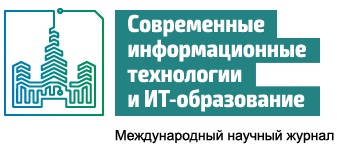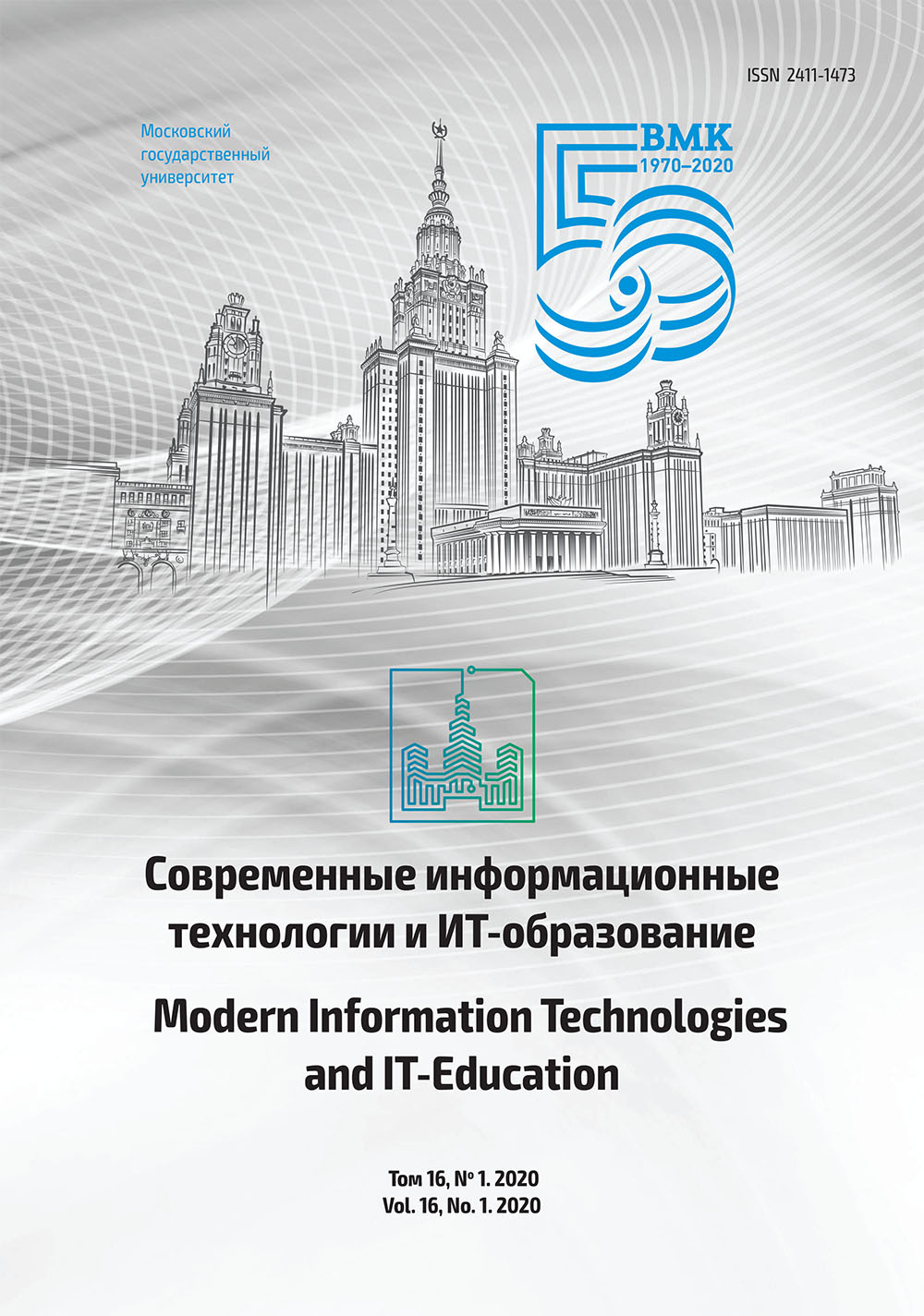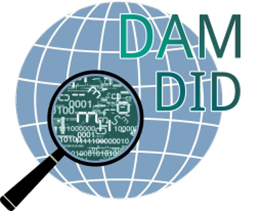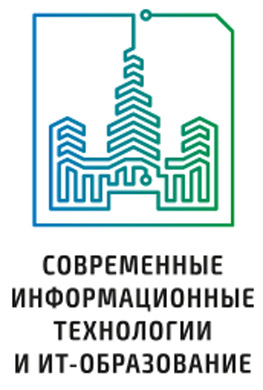Цифровые помощники как инструмент оптимизации взаимодействия экономических агентов
Аннотация
В работе приведены результаты автоматизации бизнес-процессов с помощью цифровых помощников с целью оптимизации взаимодействия экономических агентов. В статье приводится обзор существующих платформ для роботизации бизнес-процессов, таких как, UiPath, Blue Prism, Automation Anywhere, NICE, PEGA, Oracle Digital Assistant. Выполнен анализ данных продуктов по качественным критериям. В процессе оценки использовались такие критерии, как распространенность решения, полнота закрытия функционала, совместимость с существующими IT-решениями, масштабируемость, степень соответствия тенденциям. Оценка проводилась по методу многокритериального анализа. На примере кейса торговой компании построены модели взаимодействия с поставщиками: модель взаимодействия, в которой человек участвует на всех этапах, и модель взаимодействия с помощью цифрового помощника, с помощью которого сокращаются трансакционные издержки. Приведены преимущества роботизации процессов с помощью «чат-ботов», используя их для взаимодействия с экономическими агентами. Также в работе дана экономическая оценка эффективности внедрения цифрового помощника на примере стоимости ответа при работе человека и стоимости ответа при работе «чат-бота». В результате проведенного исследования показано, что использование цифровых помощников для роботизации однообразной работы является эффективным для экономических агентов с высокой нагрузкой на коммуникации с внешними контрагентами.
Литература
[2] Kuzin D.V. Problems of Digital Maturity in Modern Business. The world of new economy. 2019; 13(3):89-99. (In Russ., abstract in Eng.) https://doi.org/10.26794/2220-6469-2019-13-3-89-99
[3] Piccinini E., Gregory R.W., Kolbe L.M. Changes in the Producer-Consumer Relationship – Towards Digital Transformation. Wirtschaftsinformatik Proceedings. Osnabrück, Germany: AIS Electronic Library; 2015. p. 1634-1648. Available at: https://aisel.aisnet.org/wi2015/109 (accessed 17.12.2019). (In Eng.)
[4] Weerabahu D., Gamage A., Dulakshi C., Ganegoda G.U., Sandanayake T. Digital Assistant for Supporting Bank Customer Service. In: Hemanth J., Silva T., Karunananda A. (ed.) Artificial Intelligence. SLAAI-ICAI 2018. Communications in Computer and Information Science. 2019; 890:177-186. Springer, Singapore. (In Eng.) DOI: http://doi-org-443.webvpn.fjmu.edu.cn/10.1007/978-981-13-9129-3_13
[5] Anagnoste S. Robotic Automation Process – The operating system for the digital enterprise. In: Proceedings of the International Conference on Business Excellence. 2018; 12(1):54-69. (In Eng.) DOI: https://doi.org/10.2478/picbe-2018-0007
[6] Asquith A., Horsman G. Let the robots do it! – Taking a look at Robotic Process Automation and its potential application in digital forensics. Forensic Science International: Reports. 2019; 1:111-132. (In Eng.) DOI: https://doi.org/10.1016/j.fsir.2019.100007
[7] Cooper L., Holderness D., Sorensen T., Wood D.A. Robotic Process Automation in Public Accounting. Accounting Horizons. 2019; 33(4):15-35. (In Eng.) DOI: http://dx.doi.org/10.2139/ssrn.3193222
[8] Geyer-Klingeberg J., Nakladal J., Baldauf F., Veit F. Process Mining and Robotic Process Automation: A Perfect Match. In: Wil van der Aalst et al. (ed.) Proceedings of the Dissertation Award, Demonstration, and Industrial Track at BPM 2018 co-located with 16th International Conference on Business Process Management (BPM 2018). Sydney, Australia, September 9-14, 2018. CEUR Workshop Proceedings. 2018; 2196:124-131. Available at: http://ceur-ws.org/Vol-2196/BPM_2018_paper_28.pdf (accessed 17.12.2019). (In Eng.)
[9] Kommera V. Robotic process Automation. American Journal of Intelligent Systems. 2019; 9(2):49-53. (In Eng.) DOI: https://doi.org/10.5923/j.ajis.20190902.01
[10] Agostinelli S., Marrella A., Mecella M. Research Challenges for Intelligent Robotic Process Automation. In: Di Francescomarino C., Dijkman R., Zdun U. (ed.) Business Process Management Workshops. BPM 2019. Lecture Notes in Business Information Processing. 2019; 362:12-18. Springer, Cham. (In Eng.) DOI: https://doi.org/10.1007/978-3-030-37453-2_2
[11] Kokina J., Blanchette S. Early evidence of digital labor in accounting: Innovation with Robotic Process Automation. International Journal of Accounting Information Systems. 2019, vol. 35, Article number: 100431. (In Eng.) DOI: https://doi.org/10.1016/j.accinf.2019.100431
[12] Abbasova T.S., Polshin S.N. Chat-boty i nejronnye seti [Chatbots and Neural Networks]. In: Artyushenko V.M. (ed.) Proceedings of the Interuniversity Scientific and Technical Conference on Evolutionary processes of information technology. Nauchnyj konsul'tant Publ., Moscow; 2017. p. 115-122. Available at: https://elibrary.ru/item.asp?id=29125263 (accessed 17.12.2019). (In Russ.)
[13] Taulli T. Robotic Process Automation (RPA). In: Taulli T. (ed.) Artificial Intelligence Basics: A Non-Technical Introduction. Apress, Berkeley, CA; 2019. p. 91-102. (In Eng.) DOI: https://doi.org/10.1007/978-1-4842-5028-0_5
[14] Dey S., Das A. Robotic process automation: assessment of the technology for transformation of business processes. International Journal of Business Process Integration and Management. 2019; 9(3):220-230. (In Eng.) DOI: https://doi.org/10.1504/IJBPIM.2019.100927
[15] Reddy N., Harichandana U., Alekhya T., Rajesh S.M. A Study of Robotic Process Automation Among Artificial Intelligence. International Journal of Scientific and Research Publications. 2019; 9(2):392-397. (In Eng.) DOI: http://dx.doi.org/10.29322/IJSRP.9.02.2019.p8651
[16] Auth G., Czarnecki C., Bensberg F. Impact of Robotic Process Automation on Enterprise Architectures. In: Draude C., Lange M., Sick B. (Hrsg.) INFORMATIK 2019: 50 Jahre Gesellschaft für Informatik – Informatik für Gesellschaft (Workshop-Beiträge). Bonn: Gesellschaft für Informatik e.V.; 2019. p. 59-65. (In Eng.) DOI: https://doi.org/10.18420/inf2019_ws05
[17] Aguirre S., Rodriguez A. Automation of a Business Process Using Robotic Process Automation (RPA): A Case Study. In: Figueroa-García J., López-Santana E., Villa-Ramírez J., Ferro-Escobar R. (ed.) Applied Computer Sciences in Engineering. WEA 2017. Communications in Computer and Information Science. 2017; 742:65-71. Springer, Cham. (In Eng.) DOI: https://doi.org/10.1007/978-3-319-66963-2_7
[18] Nimavat K., Champaneria T. Chatbots: An Overview Types, Architecture, Tools and Future Possibilities. International Journal for Scientific Research & Development. 2017; 5(7):1019-1024. Available at: http://ijsrd.com/Article.php?manuscript=IJSRDV5I70501 (accessed 17.12.2019). (In Eng.)
[19] Kocielnik R., Avrahami D., Marlow J., Di Lu, Hsieh G. Designing for Workplace Reflection: A Chat and Voice-Based Conversational Agent. In: Proceedings of the 2018 Designing Interactive Systems Conference (DIS'18). Association for Computing Machinery, New York, NY, USA; 2018. p. 881-894. (In Eng.) DOI: https://doi.org/10.1145/3196709.3196784
[20] Soni R., Tyagi V. Acceptance of Chat bots by Millennial Consumers. International Journal for Research in Engineering Application & Management. 2019; 4(10):429-432. (In Eng.) DOI: https://doi.org/10.18231/2454-9150.2018.1343
[21] Saquete, E., Tomás D., Moreda P., Martínez-Barco P., Palomar M. Fighting post-truth using natural language processing: A review and open challenges. Expert Systems with Applications. 2019; 141, Article number: 112943. (In Eng.) DOI: https://doi.org/10.1016/j.eswa.2019.112943
[22] Dale R. NLP meets the cloud. Natural Language Engineering. 2015; 21(4):653-659. (In Eng.) DOI: https://doi.org/10.1017/S1351324915000200
[23] Ingersoll G.S., Morton Th.S., Farris D. Taming Text: How to Find, Organize, and Manipulate It. Manning Publications; 2013. (In Eng.)
[24] Clark A., Fox C., Lappin S. The Handbook of Computational Linguistics and Natural Language Processing. Wiley-Blackwell; 2013. (In Eng.)
[25] Gosteva O.V. The methodology for choosing IT solutions for automatization of business processes at enterprises of military-industrial complex. Journal of the Ural State University of Economics. 2015; 5:101-109. Available at: https://elibrary.ru/item.asp?id=24898802 (accessed 17.12.2019). (In Russ., abstract in Eng.)
[26] Jordan J. Robots. Cambridge, Mass.: The MIT Press Essential Knowledge series; 2016. (In Eng.)

Это произведение доступно по лицензии Creative Commons «Attribution» («Атрибуция») 4.0 Всемирная.
Редакционная политика журнала основывается на традиционных этических принципах российской научной периодики и строится с учетом этических норм работы редакторов и издателей, закрепленных в Кодексе поведения и руководящих принципах наилучшей практики для редактора журнала (Code of Conduct and Best Practice Guidelines for Journal Editors) и Кодексе поведения для издателя журнала (Code of Conduct for Journal Publishers), разработанных Комитетом по публикационной этике - Committee on Publication Ethics (COPE). В процессе издательской деятельности редколлегия журнала руководствуется международными правилами охраны авторского права, нормами действующего законодательства РФ, международными издательскими стандартами и обязательной ссылке на первоисточник.
Журнал позволяет авторам сохранять авторское право без ограничений. Журнал позволяет авторам сохранить права на публикацию без ограничений.
Издательская политика в области авторского права и архивирования определяются «зеленым цветом» в базе данных SHERPA/RoMEO.
Все статьи распространяются на условиях лицензии Creative Commons «Attribution» («Атрибуция») 4.0 Всемирная, которая позволяет другим использовать, распространять, дополнять эту работу с обязательной ссылкой на оригинальную работу и публикацию в этом журналe.













